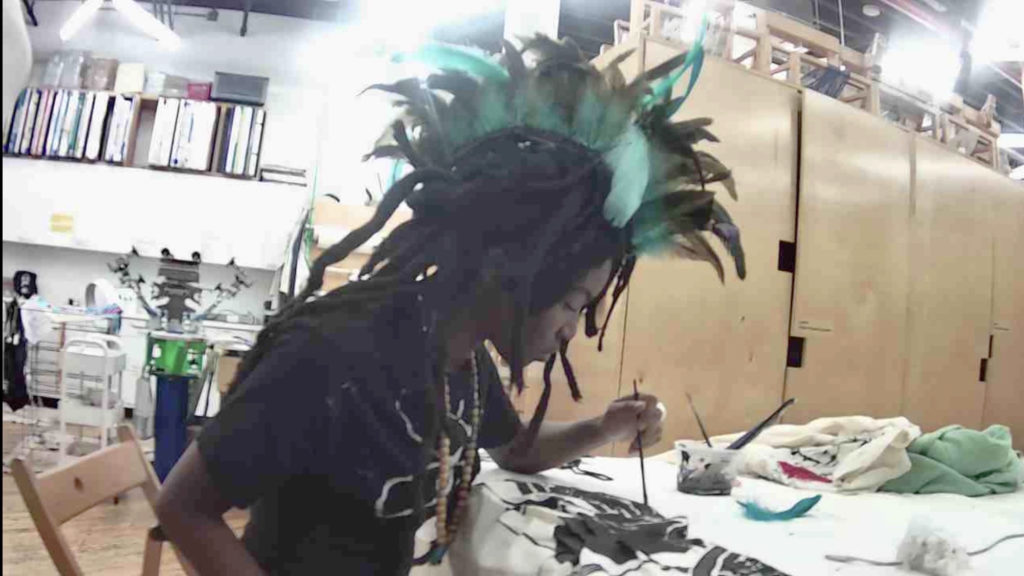AIR 15 Feature: Hera Ford
On a summer morning last week, I caught up with AIR 15 resident Hera Ford to talk about her work and what inspires her practice: Hera Ford is a multimedia artist, textile designer, and dancer. She’s a 2020 graduate of Rhode Island School of Design where she majored in Textiles. Her work is influenced by her relationship to the Black American South, her ancestral land, and heirloom dances of Black Americans and the African Diaspora.
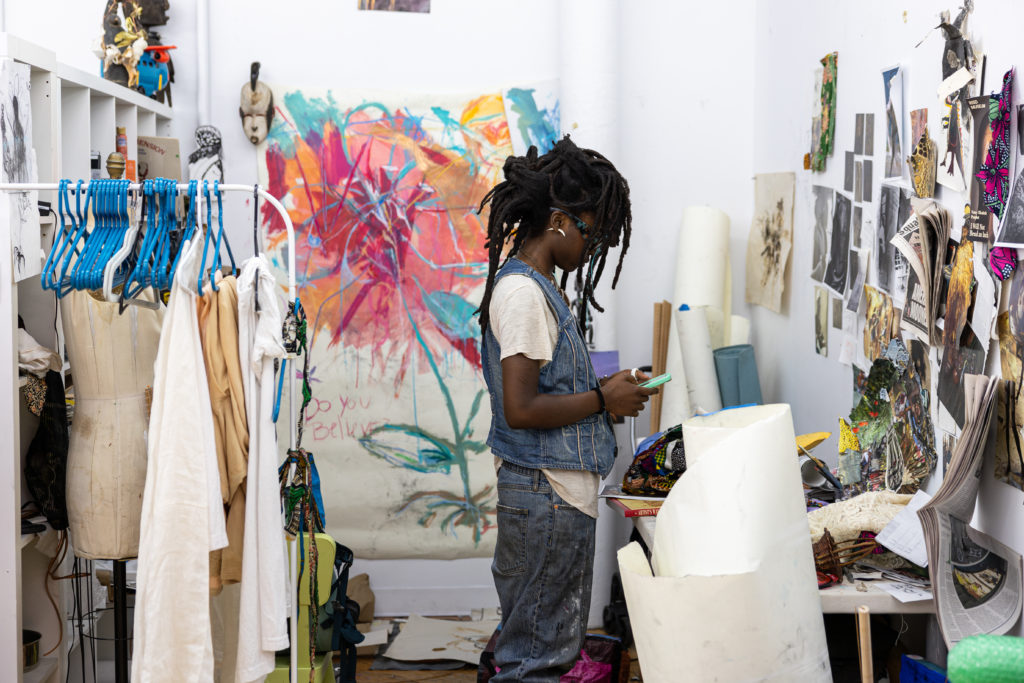
Romina: So, you said summer has been busy. What have you been up to?
Hera: Dancing a lot. I feel like dance has been a way for me to physically process change. And I think it's really helpful to do it simultaneously as all of the changes happen around me. I was actually talking to someone the other day about how to process change and what that looks like in your body. Sometimes it looks like having intentional space that's just stillness. And sometimes it looks like having movement to process. I like being able to process what I can't put into words through my body. And so I think getting deeper into my body practice has helped.
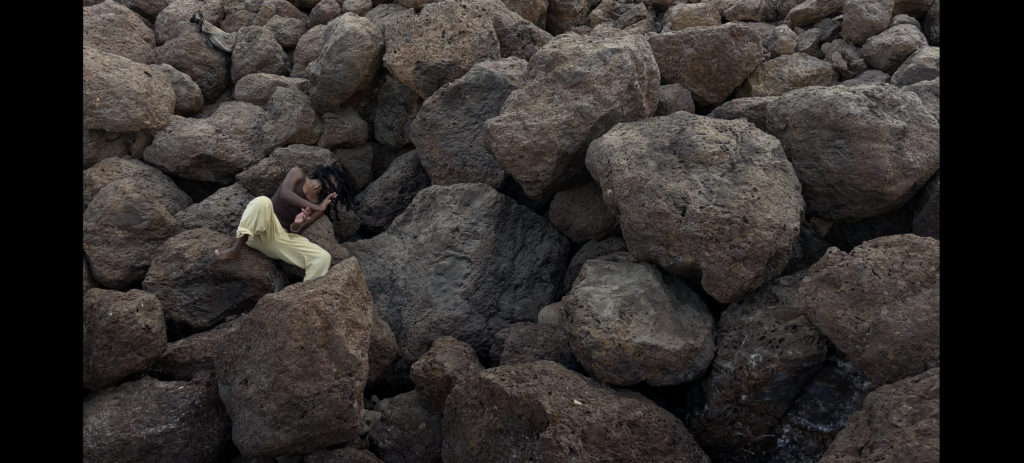
Romina: Your drawings also have a lot of movement in them. Has dance always influenced your practice or how did that process happen?
Hera: I grew up dancing but I kind of lost it along the way. Now I’ve found it again but it's always been a motif in my life. It’s a recurring pattern. All of the places that I've been have had a significant dance impact on me. So I would say maybe subconsciously, my work is influenced by movement. But I’d say travel too, 'cause the last couple of years I've been blessed to be able to travel a lot, specifically Ghana, and Trinidad and Tobago, and even just along the south. Going to dance classes in the south has had a significant impact on my work.
Romina: That's beautiful because then movement is present with your body and also with the landscape.
Hera: Exactly. And I've been thinking a lot about how some dance movements, like a machete going across the land or a scythe digging into the dirt, portray how we've interacted with the land, how we've cultivated the land. I can feel that in a lot of the dance movements I've been learning.
I've been thinking a lot about how to record things through the body, especially as I'm working with my grandmother. She has a lot of stories of our ancestry that are just simply passed down through her. And one of the stories that I remember her telling me as a kid was that one of our ancestors was from Ghana.
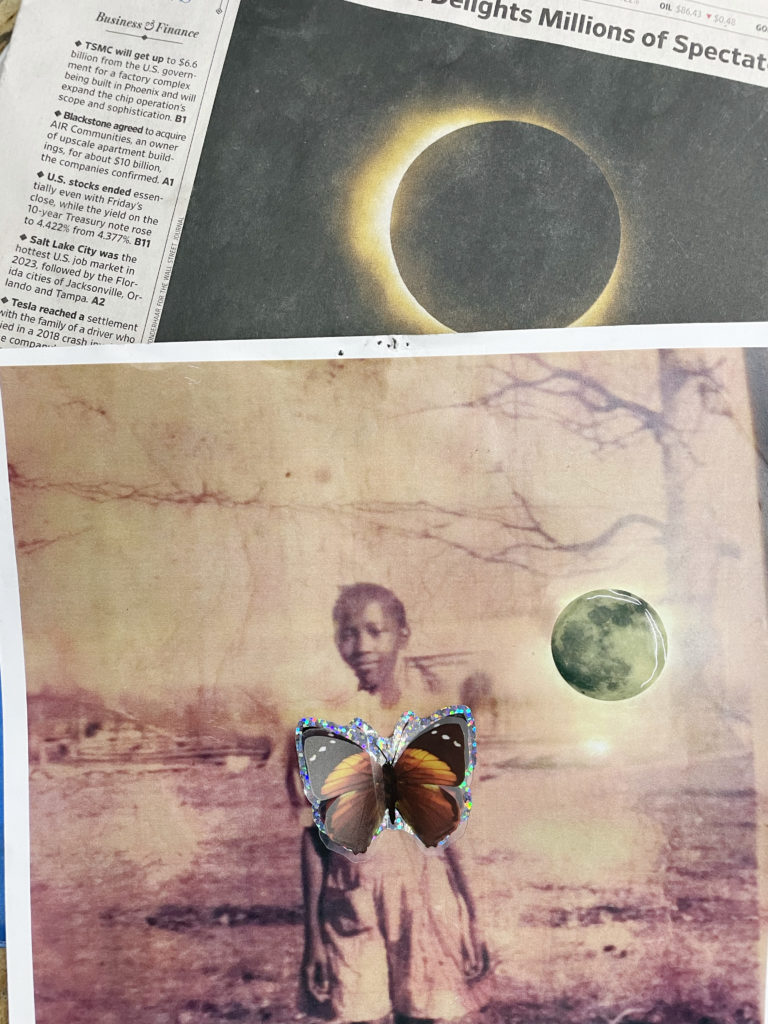
Romina: Could you tell me a little bit about that project? From the beginning to the end and where are you now?
Hera: Yeah, I would say it was one of the most intense experiences. The hardest thing that I've ever had to do. I don't think I'll even understand everything around it until I'm my grandmother's age. I've had to kind of come to terms with being who I am now and allowing there to be this open space of not understanding.
Two of my grandparents grew up on sharecropping plantations in the south. My grandfather grew up on a sharecropping plantation in Arkansas, and my grandmother grew up on one in Minter City, Mississippi.
Romina: What is a sharecropping plantation?
Hera: Many formerly enslaved folks and their descendants transitioned into being sharecroppers, doing the same labor, but for very little pay. My step-grandmother had to pick around 100 to 200 pounds of cotton for $1.75 per 100 pounds.
What's different about my grandmother's story is that her grandfather and her grandmother owned the plantation. It was rare for black women to own land at all and especially that amount of land. She owned 350 acres of land which later became shared with my grandfather. My grandmother grew up on that plantation.
The plantation was later taken. I think it was 1939 and my grandmother says she has a memory of men on horses coming to tell her grandfather that the land was no longer his. We still have the cemetery, which is where her grandfather still lies.
Romina: How do you see these processes in your life as part of your art practice? Or how do you understand your art practice?
Hera: I feel like I'm kind of re beginning or re understanding what my art practice is. So much has been guided by an ancestral or spiritual force. I feel like in this residency I started to touch on my wounds around mothering and wounds that can be left in the earth or in the land.
I want to talk a little bit about the butterfly and how she's been such a beautiful teacher for me. I saw this story about how monarchs do an ancestral migration to Mexico every year. And once they get there, they make the journey back, but sometimes they might die along the journey. So the next generation picks up where the ancestor left off. But it's like without even knowing, intuitively, they just know how to go back home. I really relate with that story. I feel like I have this inner compass that tells me where to go. And without this kind of intellectual knowledge, I can move from an intuitive place and say “this is where I'm supposed to go and this feels right”. And that feels beautiful.
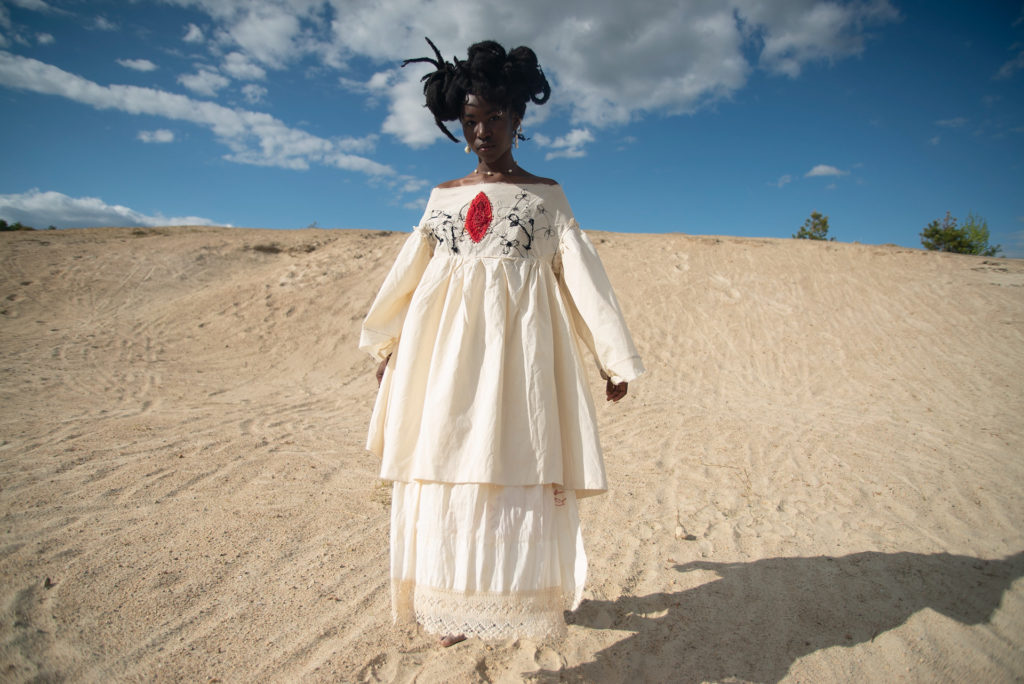
Romina: Could you talk about how your presentations feel like this ever evolving installation?
Hera: I feel like I've never really considered myself as an installation artist until here because that's just how my brain works. And so I never really thought of (my process) as the art piece. I think that's a new form of presentation that I'm thinking about in my work. I think that has expanded my idea of what my work can be and go and the installation part feels very new, right?
Romina: I'm glad this was a space to find it. It makes sense. You talked about how this research process is like finding historical justice, and it does feel like what we see in your installations. Even if it's not represented literally, it does seem like the presence of this path you’ve been on. If that makes sense.
Hera: It does. It feels like there's these links or connections between things that can feel very far apart. Like when I went to Ghana for the first time, it felt like the ancestors were there and they told me to come. It felt like there had been this long line or cord that was pulling me. But I'm here in North America, across the Atlantic Ocean. There's this cord coming out of my belly button that is still linking me to this land that I've never been to. I've been listening to this song by Jimmy Hendrix called Belly Button Window. He's singing from the perspective of a baby like being inside the womb and looking outside the belly button window. But I relate to it so much! I just love it.
Romina: And thinking of that, could you address the presence of music in your practice? Cause in your final, you opened your critique with music, and it felt powerful.
Hera: I don't know, there's something about sound… My aunt always gives me this analogy where it's like climbing a ladder. Whenever you go into a spiritual experience, she tells me that if I can't find a way out or if I'm stuck, I should look for the sound and that's the ladder to climb out. It feels like it's like a gateway to be able to talk in a different way, just like dance and I don't know, there's something just about sound that it feels like the foundation for how I approach a lot of my practice in general. I feel music allows other people to feel what you feel. It's like a platform for empathy in this way, where you can manipulate the vibration. Like manipulating the vibration of a place, an experience, of history through sound.
I'm excited to do the final project because it's going to push me. I have these sounds in my head that I've been archiving for years.
Romina: So can you tell us a little bit of what we can expect of your final exhibition?
Hera: I have all the elements that I've done from the residency. And I wanna have a music component. But I'm still moving through a lot. So that could change because I'm also just doing a lot of dancing and maybe I just want to dance.
